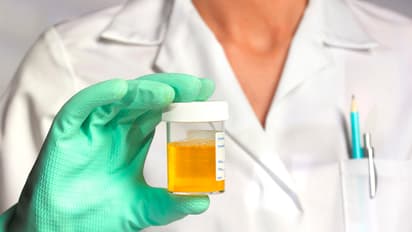Weird but true! Scientists turn human urine into bone-like material using yeast

Synopsis
Scientists in the US have created a method to convert human urine into hydroxyapatite, the mineral found in bones and teeth, using a special yeast. The process is cheap, fast, and environmentally friendly.
A team of scientists in the United States has found a new way to make hydroxyapatite, the main mineral found in human bones and teeth, by using human urine.
This new method was developed with help from the Defense Advanced Research Projects Agency (DARPA) and could be useful for medical, environmental and industrial purposes, says a report in Live Science.
What is hydroxyapatite?
Hydroxyapatite is a hard, naturally occurring substance made of calcium, phosphate and hydroxide. It gives strength to our bones and tooth enamel. Since it is already found in the human body, it is commonly used in bone and dental implants. It is safe for the body and can help new bone tissue grow.
Why scientists wanted a new method
Making hydroxyapatite in the lab is often expensive and can produce harmful chemicals. In the human body, a special type of cell called osteoblasts creates hydroxyapatite, but these cells are hard to grow and work with in large amounts. So, scientists looked for an easier and cheaper way.
Turning to yeast for answers
The researchers used a type of yeast called Saccharomyces boulardii, which is often used as a probiotic and found on the skin of tropical fruits like lychee. They made small changes to the yeast’s genetic material so that it could turn urea, a chemical found in urine, into hydroxyapatite.
They called this genetically changed yeast 'osteoyeast'.It breaks down the urea from urine and creates hydroxyapatite as a byproduct. For every liter of urine, it produces about one gram of hydroxyapatite.
Why this is a big deal
The process is quick, it takes less than a day. It also works at low temperatures and doesn't need expensive equipment. According to lead scientist David Kisailus, the method is similar to how beer is brewed using yeast. This means it can be done at large scales, even in developing countries.
The process also helps with wastewater treatment by removing urine from the water system, reducing pollution.
Possible uses in the future
The scientists say this method could be used in many ways:
- Making bone and dental implants
- Producing biodegradable plastics
- Creating new types of construction materials
- Using hydroxyapatite in archaeological restoration
- Helping with energy storage solutions
They are now working on ways to make the process larger so that it can be used in 3D printing and in industries around the world.
This new method not only recycles human waste but also creates a valuable material that can help in medicine, construction, and the environment. With the support of DARPA, the researchers hope to turn this idea into a real-world solution that benefits both people and the planet.